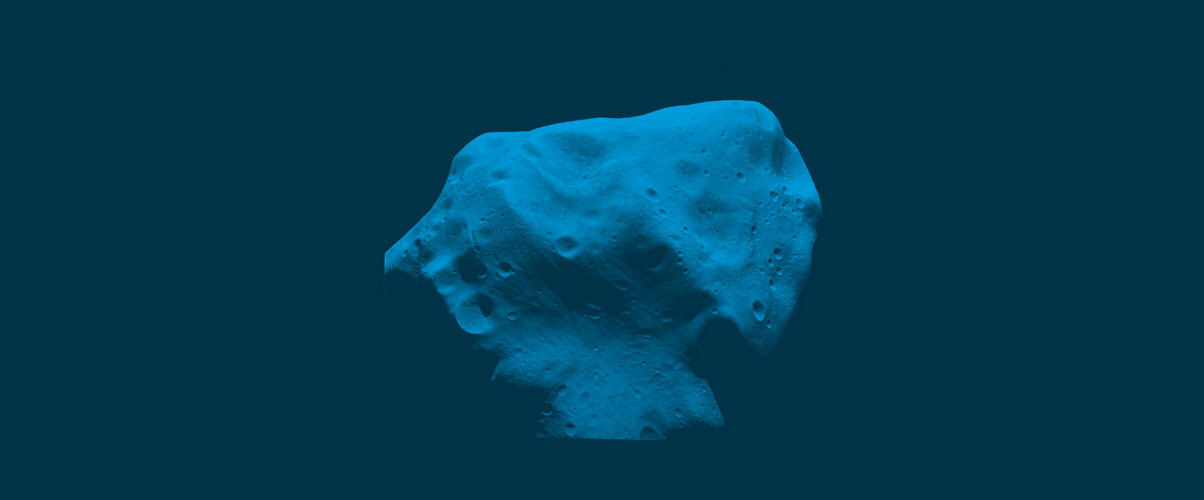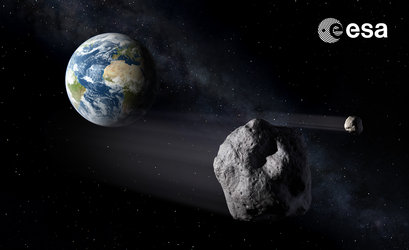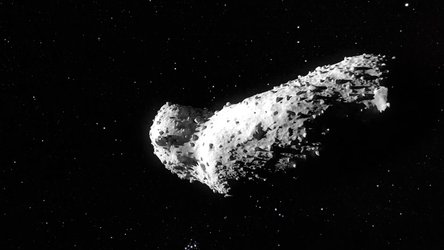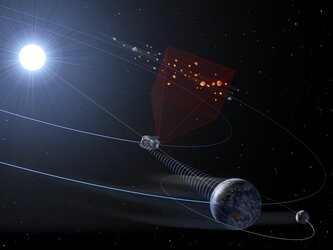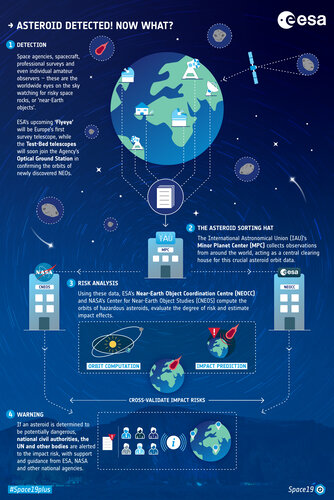10 years preparing for 'Armageddon'
It’s a scenario made famous by the 1998 film ‘Armageddon’: an asteroid is spotted on a collision course with Earth, and experts scramble to plan a space mission to rendezvous with the asteroid and mitigate the danger. It’s classic science fiction, but did you know there is a very real group responsible for recommending such a response in real life? And it celebrates its tenth birthday this week.

When the Chelyabinsk asteroid struck the skies over Russia’s Ural region in February 2013, it highlighted humankind’s fragility.
With a mass of around 12 000 tonnes and a size of 19 m, the Chelyabinsk asteroid was the second-largest asteroid to strike Earth in the last century. Impacting the upper atmosphere at a shallow angle and at high speed, it disintegrated, releasing a shockwave that injured more than 1500 people and damaged 7300 buildings. Many people were also injured by shards of flying glass as they peered out of windows to see what was happening.
By a strange twist of fate, the Chelyabinsk asteroid struck on the same day that the United Nations Committee on Peaceful Uses of Outer Space Working Group on Near-Earth Objects met in Vienna to finalise a recommendation to the UN on how to defend Earth from possible asteroid impacts.
At this meeting, Earth’s experts laid the foundations for the formation of two international bodies that would enable a truly global response to the risk of an asteroid strike: the International Asteroid Warning Network (IAWN) and the Space Mission Planning Advisory Group (SMPAG; pronounced ‘same page’).
Keeping humankind on the ‘same page’

SMPAG and IAWN are now celebrating their tenth anniversaries, with the first SMPAG meeting taking place on 6-7 February 2014 and the first IAWN meeting taking place in January of the same year.
IAWN is coordinated by NASA: it is a worldwide collaboration of asteroid observers, analysts and modellers. When an asteroid is detected on a collision course with Earth, IAWN assesses the impact time, location, and severity.
It is IAWN’s job to inform SMPAG and national governments via the UN and to provide the information about the asteroid needed to plan a reactive space mission and for civil disaster preparation and response agencies.
SMPAG is chaired by ESA: it serves as a forum for the world’s space agencies and coordinates Earth’s space-based response to the danger.
It assesses the possibility of using spacecraft missions (typically not involving oil drillers) to study, deflect or destroy an incoming asteroid larger than 50 m in size and with an impact probability larger than 1 %. It then advises decisionmakers on possible actions to take.
No slowing down for ESA’s planetary defenders

During the recent 22nd meeting of SMPAG on 31 January 2024, one of the major topics of discussion was the possible exchange of information between space agencies planning to explore asteroid Apophis.
Apophis is a large asteroid, estimated to be around 350 m across, that will safely fly by Earth on 13 April 2029. It will come closer to our planet than the ring of telecommunications and weather forecasting satellites in geostationary orbit.
This flyby offers a unique chance to study such a large asteroid up close with a satellite mission, and space agencies intend to make the most of it. ESA is currently studying two mission concepts that would fly to Apophis as it approaches Earth in 2029.

ESA is also currently preparing to launch its Hera mission. In September 2022, NASA’s DART mission demonstrated a key component of asteroid deflection – an impact in which a spacecraft deliberately crashes into an asteroid to alter its course.
Hera will launch in October 2024 and travel to the same asteroid system and measure the results. In doing so, it will help turn this novel experiment into a repeatable planetary defence approach.
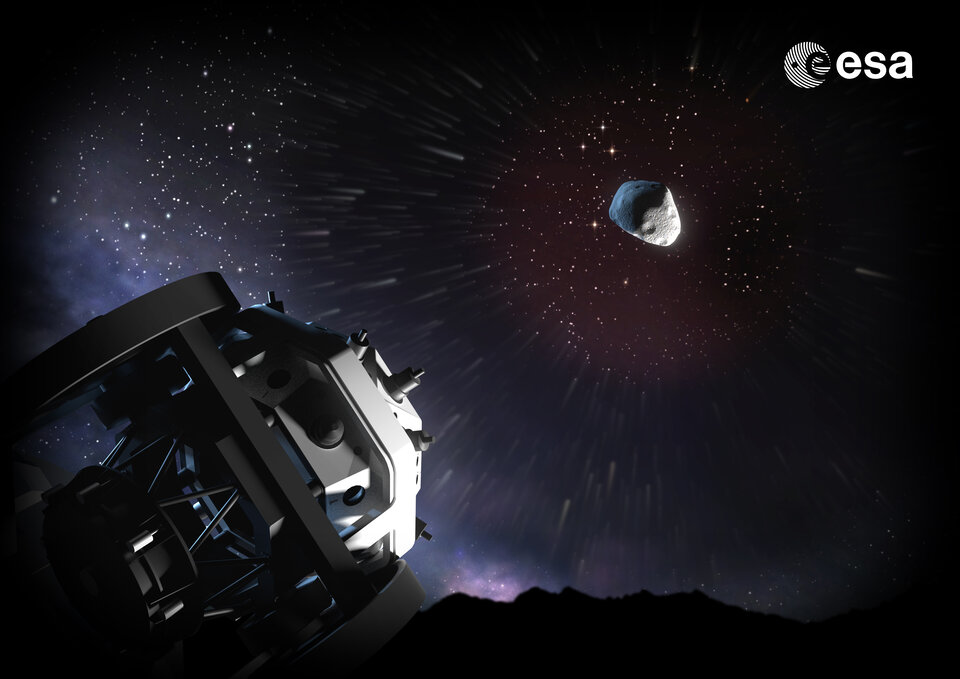
However, in order to deflect an asteroid, you first have to spot it. The Minor Planet Center currently catalogues over 34 000 known near-Earth asteroids, and ESA’s Near-Earth Object Coordination Centre keeps a close eye on them.
ESA’s two Test-Bed Telescopes and its upcoming Flyeye telescope are part of a future automated network that will continuously scan the entire sky every night on the hunt for new, potentially dangerous space rocks. Anything this network finds will be checked by a human, before being submitted to the Minor Planet Center to trigger follow-up observations.

But even this network won’t be able to spot the asteroids heading towards Earth while hiding within the glare of the Sun. ESA’s proposed NEOMIR space-based telescope will be located outside of Earth’s distorting atmosphere, and therefore able to rely on infrared light, rather than visible light. By making observations in the infrared, NEOMIR will detect the heat emitted by asteroids themselves, which isn’t drowned out by sunlight.















 Germany
Germany
 Austria
Austria
 Belgium
Belgium
 Denmark
Denmark
 Spain
Spain
 Estonia
Estonia
 Finland
Finland
 France
France
 Greece
Greece
 Hungary
Hungary
 Ireland
Ireland
 Italy
Italy
 Luxembourg
Luxembourg
 Norway
Norway
 The Netherlands
The Netherlands
 Poland
Poland
 Portugal
Portugal
 Czechia
Czechia
 Romania
Romania
 United Kingdom
United Kingdom
 Slovenia
Slovenia
 Sweden
Sweden
 Switzerland
Switzerland


























